Once the Enterprise is characterized as a system of systems, each of the systems will need to be realized, operated, enhanced and released.
The capabilities to transform and change an enterprise are actually the part of the enterprise that adapts and changes.
The picture below provides a model of the elements necessary for transformation and change.
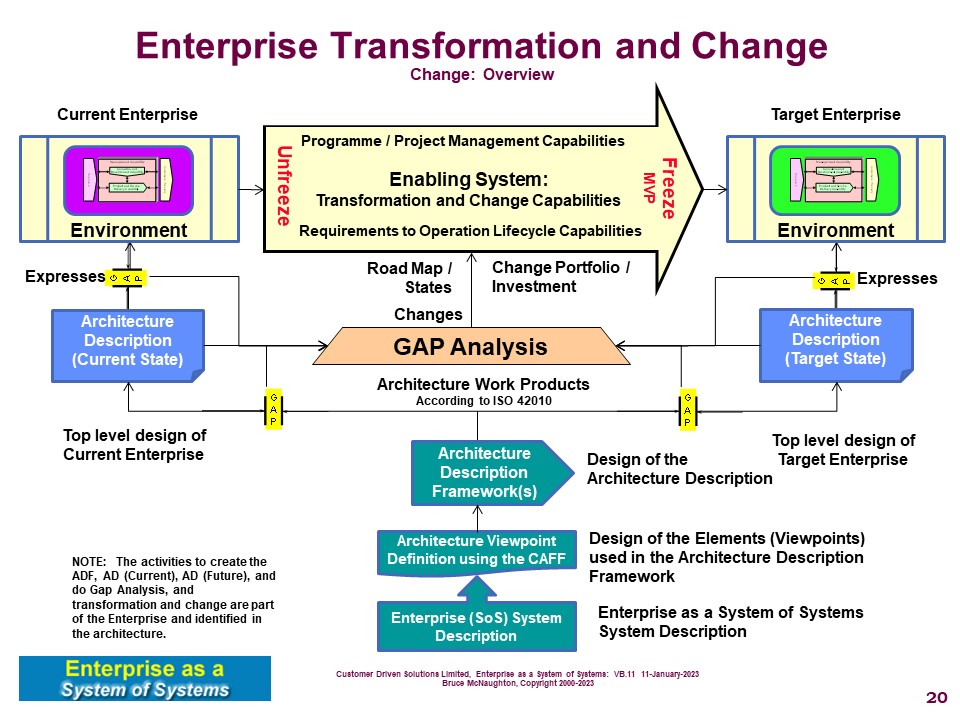
This picture provides a model to introduce these concepts and principles. The following documents provide the contents of these sections:
Link to the Enterprise Transformation and Change Model PDF .
The Enterprise Transformation and Change PDF contains the Enterprise Transformation and Change Concepts.
This approach is very similar to the approach identified by Russell Ackoff in the Interactive Planning Process or Peter Checkland, in the Soft Systems Methodology (SSM). Both of these approaches take a holistic view of the enterprise and identify the changes to move the enterprise to a future state.
This approach also incorporates the approaches in ISO 42010 and ISO 15288. These will be highlighted in the various sections of this set of topics.
See the Principles of Transformation and Change
One of the principles of transformation and change is that all change comes from a realized part of the enterprise. The enterprise is created from one team and then grows through the creation of additional teams or relationships / contracts with other organizations. The picture below highlights the realized systems within the enterprise transformation and change model:
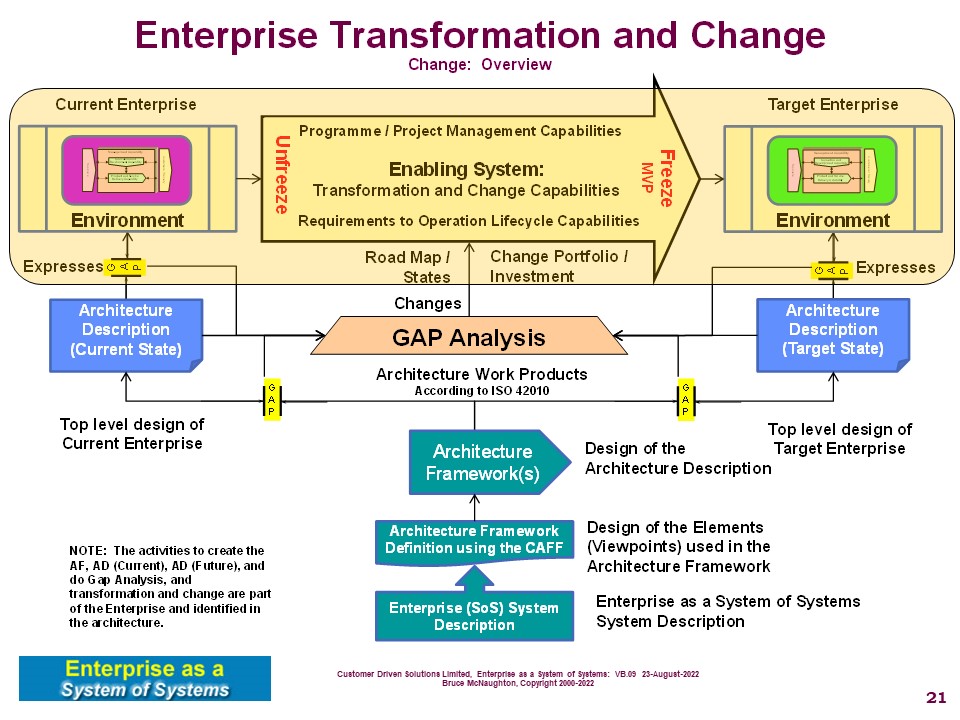
The realized systems represent the current state of the enterprise, the aspects of the enterprise that enable transformation and change and the target realized system that emerges as a result of the change.
The following picture highlights the elements necessary to produce the architecture descriptions that describe each of the states of the enterprise.
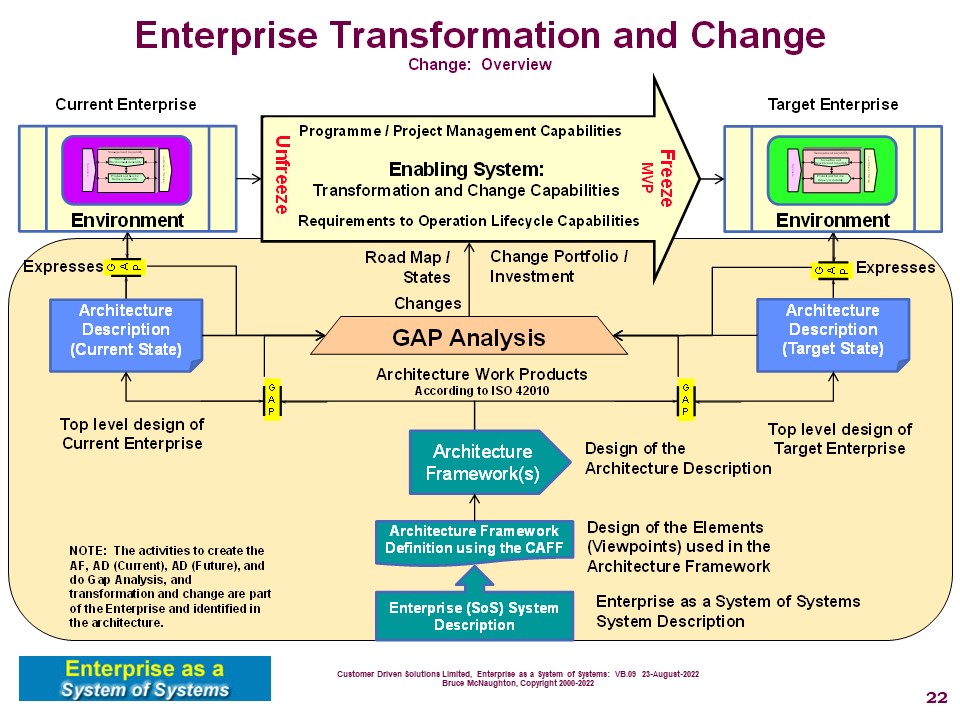
The key elements in this picture are:
- The concepts, principles and systems identified within the enterprise.
- The System Description (SDSF)s that are used to create the Architecture Description Frameworks used in an Enterprise.
- The Architecture Descriptions created using the Architecture Description Frameworks
- The Gap Analysis, Roadmaps, and Portfolios of change that drive the transformation and change.
- The enabling system (change system) that moves the enterprise from one state to another.
These represent the capabilities needed for enabling the transformation and change within the enterprise.
The steps that are defined for transformation and change using the model are:
- Identify the current state: The Mess
- Identify the target state: The Future
- Carry out a Gap Analysis: The Changes
- Identify a Road map, minimum viable products (MVP), and architecture states
- Identify the Change Portfolio and Investments
- Establish the enabling systems to transform and change the enterprise.
The steps for transformation and change can be used iteratively to manage the investment and risk of change. The following picture shows the way the elements can be organized to achieve incremental and iterative change.
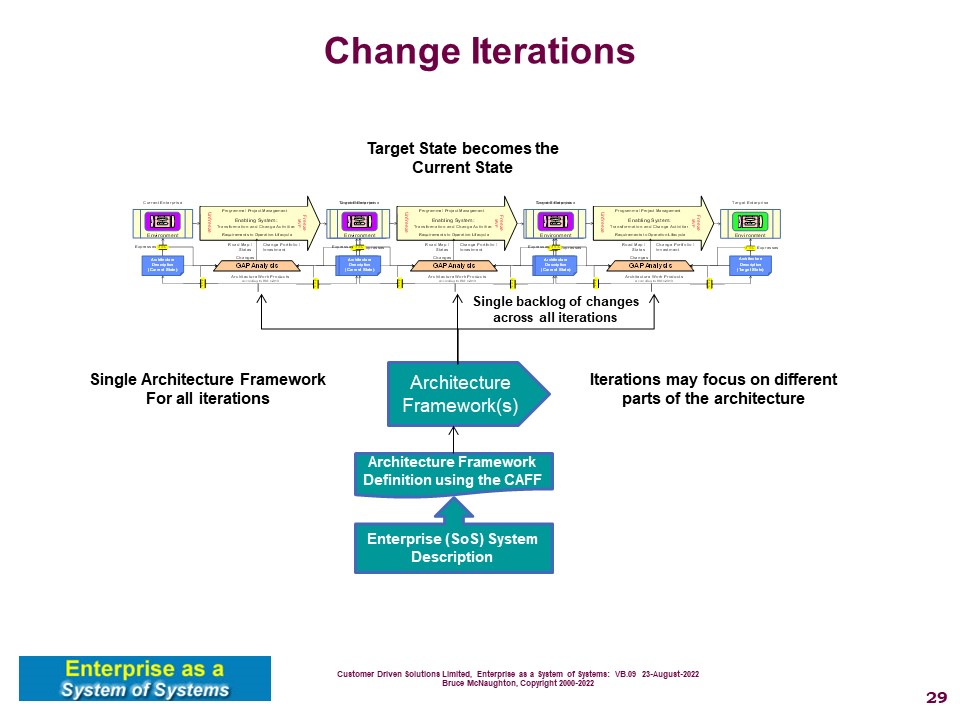
The key points in the picture are:
- For each iteration, the target state becomes the current state for the next iteration.
- A single Architecture Description Framework is used for each iteration
- A single backlog of changes can cover all iterations and provide a way to prioritize changes.
- Iterations may focus on specific parts of the architecture to stage the critical elements first.
In order to make changes within the enterprise, the Systems within the Enterprise as a System of Systems must be understood. The following picture identifies the main systems within the enterprise..
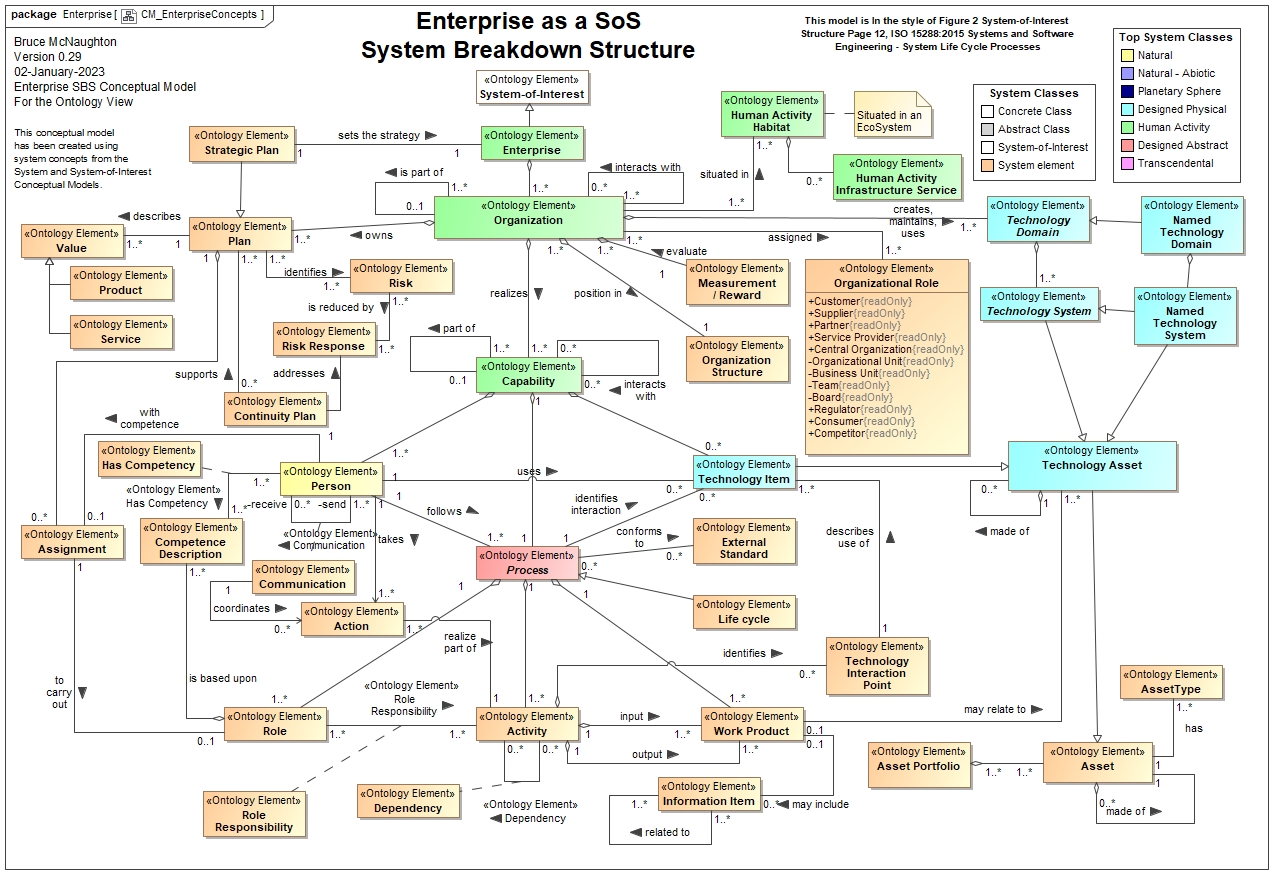
In the case of an Enterprise as a System of Systems (SoS), the architecture of the enterprise may be an integration of the various architectures of the major systems within the enterprise.. The following Architecture Description Framework will typically deliver the architecture descriptions for the enterprise:
- Enterprise (SoS) Architecture Description Framework
- Information Technology Systems Architecture Description Framework.
- Facilities / Work space Architecture Description Framework.
- Other Technology Architecture Description Frameworks, for Example:
- Aircraft ADF (for an Airline)
- Food Processing ADF
- Automobile ADF
- Computer ADF
- ETC
The Enterprise Architecture Description consists of a set of Architecture Descriptions that are managed by stakeholders with concerns and interests in the system area:
- Enterprise AD (organizations and capabilities)
- Enterprise IT AD (network of information systems)
- Enterprise Workspace AD (work spaces needed for the enterprise)
- "Technology A" AD
- ...
- "Technology Z" AD.
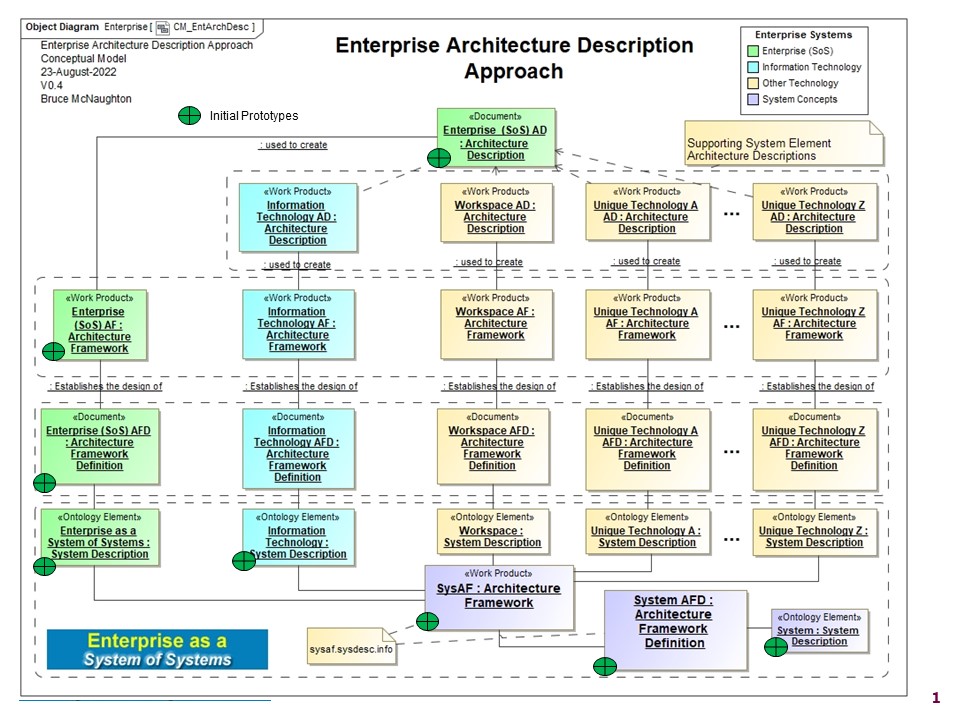
Each iteration follows the same pattern (see the picture below).
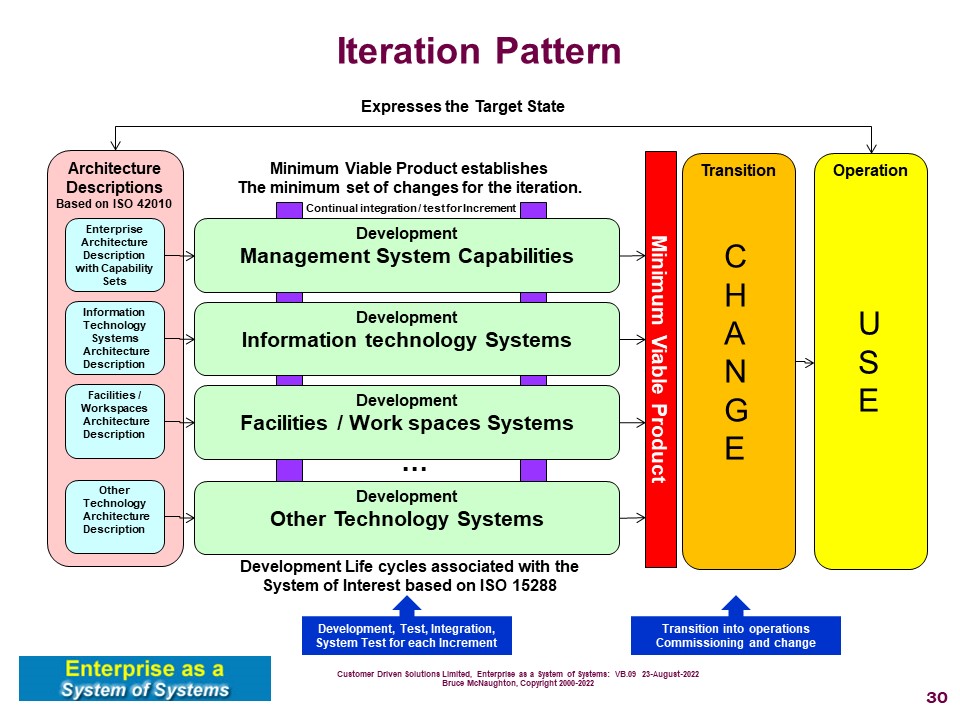
Each iteration provides the means to translate an architecture description into a realized operational Enterprise as a System of Systems (SoS).
There may be multiple Architecture Description Frameworks involved with this transformation. The key Architecture Description Frameworks are:
- Enterprise (SoS) Architecture Description Framework
- Information Technology System Architecture Description Framework.
- Facilities and Workspaces Architecture Description Framework.
- Other Enterprise Specific Technology Architecture Description Frameworks. (e.g. Aircraft, Food Processing, Health Care, etc)
The concept of enterprise maturity is also a combination of maturity types within the enterprise. The following picture highlights 3 maturity models:
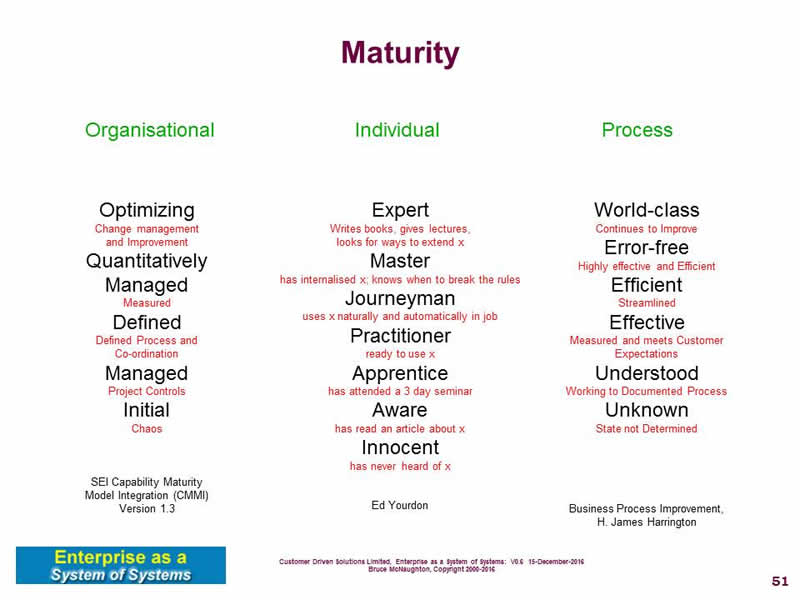
The elements represented by these maturity models can be at varying states across the enterprise. Movement to roughly the same level prevents other emergent interactions from occurring. There are other approaches that also address maturity:
- EFQM
- Baldridge Award
- Various Management / Leadership Maturity Models.
Maturity Models also relate to the readiness for change within an enterprise. Higher maturity enterprises embrace change. Lower maturity enterprises must be aware of the change equation in all attempts to improve maturity:
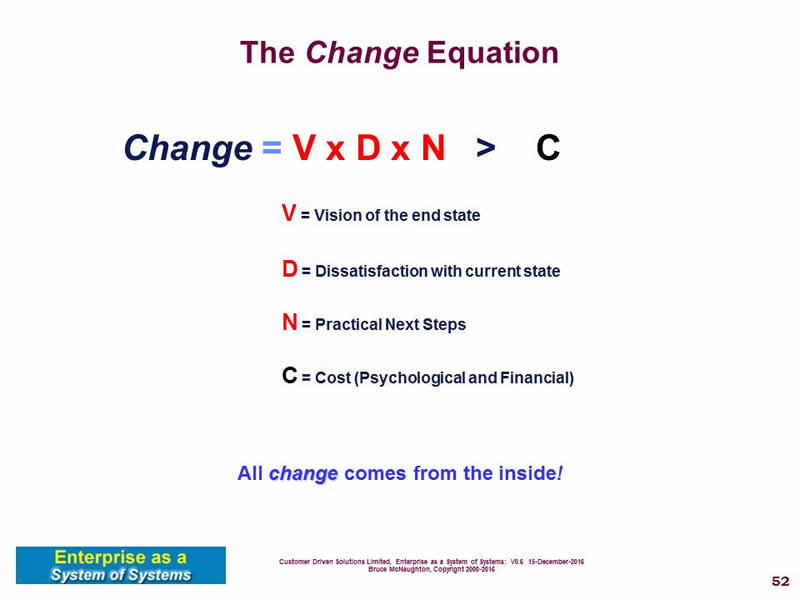
The operational change relates to capabilities already included within the enterprise to provide a continual improvement capability. The ability to handle various operational gaps is shown in the following picture:
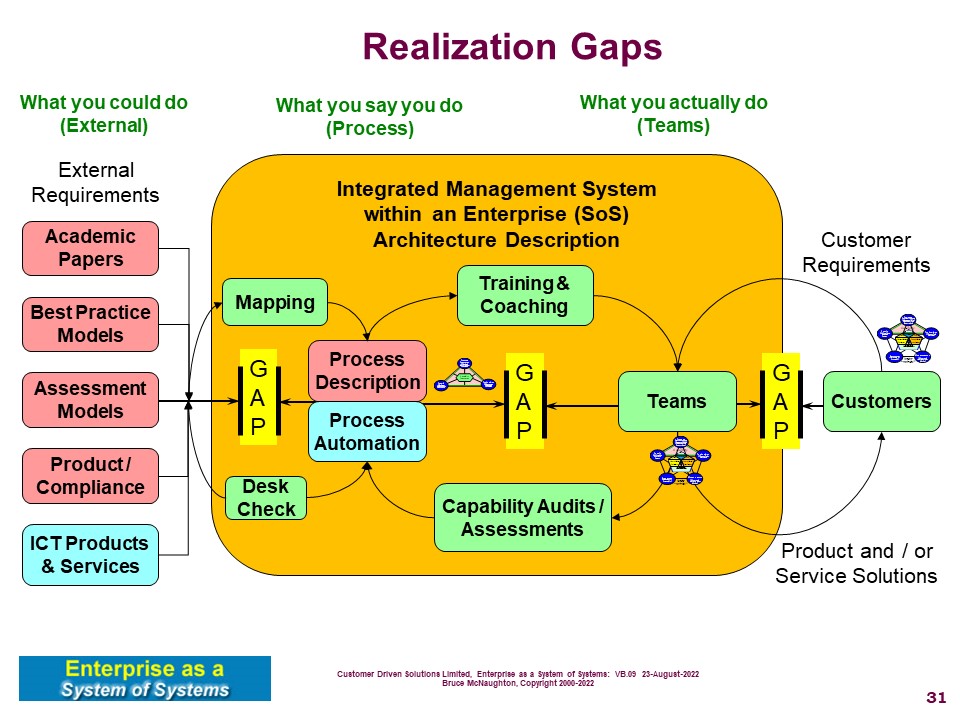
These changes do not require changes to the architecture description but have a direct impact on the performance of the organization. For example:
- Increasing the capacity of a team based upon increased volume of work.
- Identifying and elimination of defects within an operational process (Lean Six Sigma)
- Improving processes
- Improving training and development for specific classes of employees.
All of these changes are driven from the following practices within the current state:
- Operational Audits and assessments
- Cultural audits and assessments
- External benchmarking (some may be operational changes).
- Performance reviews
- Customer complaints and feedback
- Customer satisfaction and NPS measurements.
- etc.
The capabilities necessary for transformation and change are identified in the Enterprise (SoS) Architecture Description Framework. These include:
- Enterprise Architecture
- Programme and Project Management.
- Various Change Life Cycles
- Procurement.
- Planning and Review